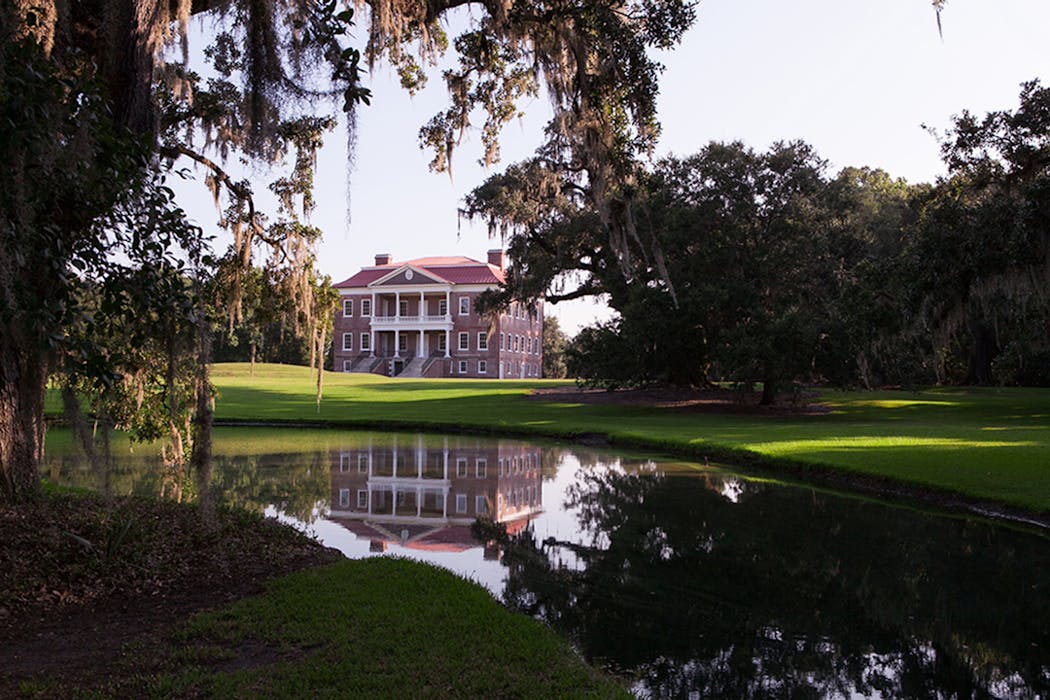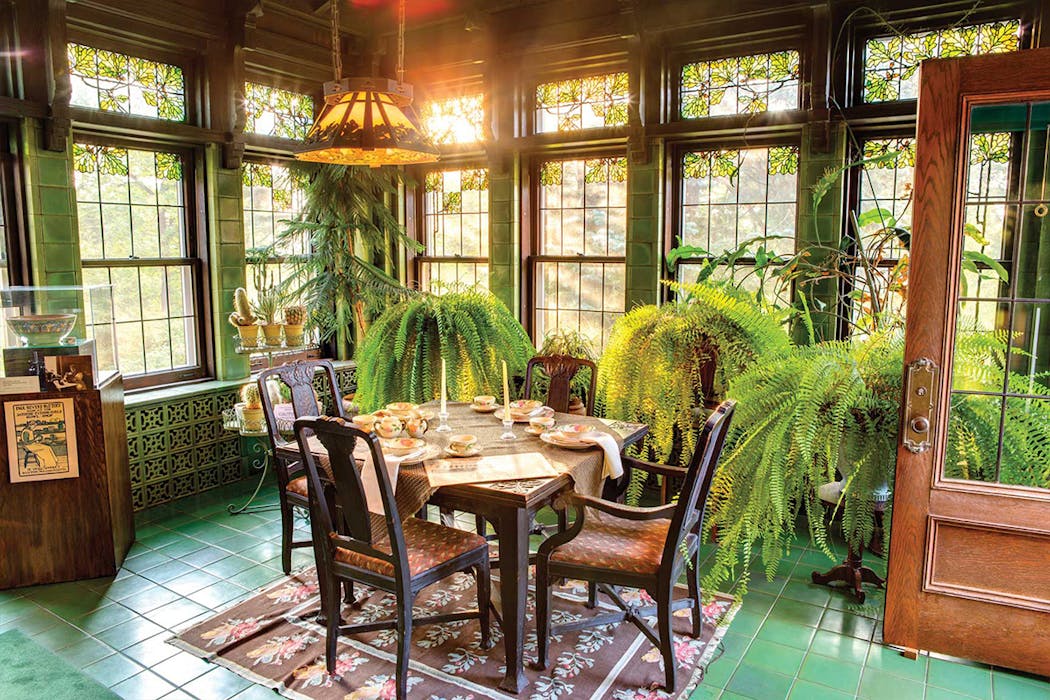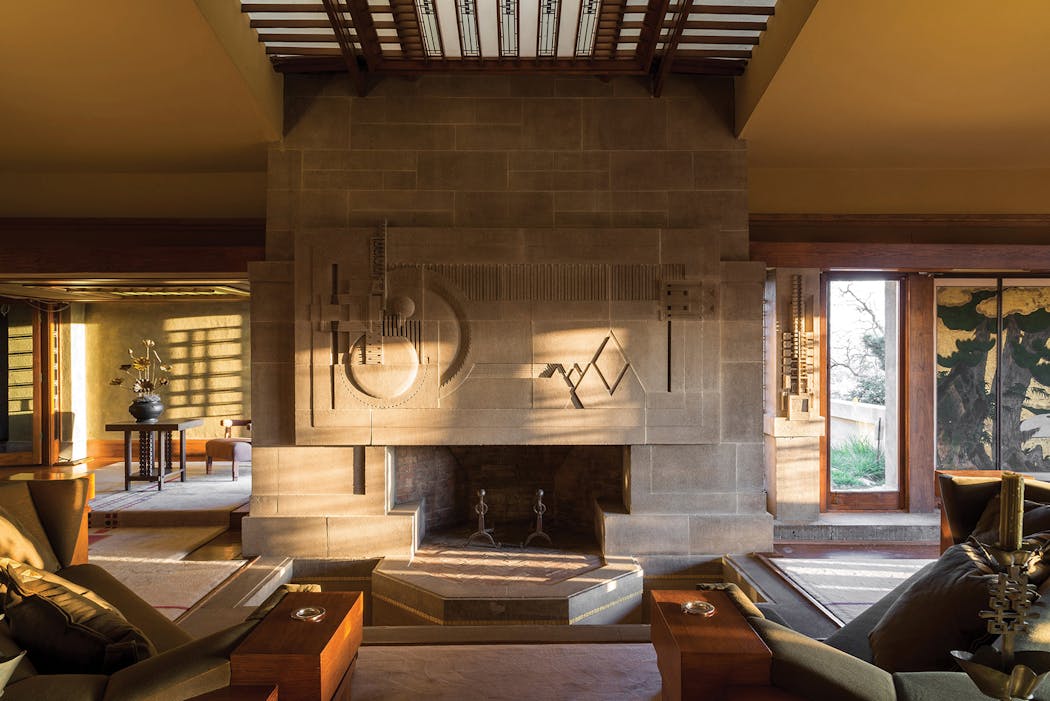At Steve Sikora's house in the Prospect Park neighborhood of Minneapolis, a wide soffit extends over the walkway that leads to his front door. He walks beneath it, enters the house to show the seamless way the soffit becomes part of the interior ceiling and turns to make eye contact with the people on his tour — every one of them watching from a computer or phone screen.
The sleek design that Sikora highlights was created in 1934 by Frank Lloyd Wright, who designed the home, known as the Malcolm Willey House. The house has joined 20 other Wright sites from around the country to up their online presence at a time when physical tours have halted.
Historic homes nationwide — many with missions to educate and inspire — are doing the same, from James Madison's 1764 Montpelier in Virginia to architect Philip Johnson's Glass House in Connecticut.
If ever there was a time to home gaze, especially for people with a penchant for significant historic beauties, now is the time. Homes that typically charge an entrance fee for tours are showing off house secrets and charms online and for free (donations are accepted, of course, because it isn't cheap to keep these homes in working order).
Drayton Hall's signs of age
At Drayton Hall, an 18th-century estate just outside Charleston, S.C., curator Trish Smith leads the way to a small space below a stairway to reveal old-time graffiti etched into the plaster. The primitive rendering of a horse, carriage and driver was carved in the house's early years. She then shows off another sign of age in the 1738 Palladian-style structure: rough hand-hewn nails exposed when plaster fell. "This is really old stuff. It helps you date a building," she said to her cameraman — and viewers everywhere.
Carter C. Hudgins, president and CEO of Drayton Hall Preservation Trust, says that education is a key part of the mission at what he calls "the most beautiful home in the nation to survive from Colonial America." Videos on the organization's Facebook page explore a variety of topics such as wallpaper from the 1920s and the lives of enslaved people at the plantation. Photos on the website show one of the home's most popular features and one that many people try to re-create in their own homes: a beautifully patinated blue-green on the walls. "It was painted after the Civil War, call it 1880, and hasn't been touched up since," Hudgins said.
The organization charges $32 for a tour, and spring is its high season. With new videos popping up on its Instagram and Facebook accounts and on YouTube, it hopes to keep the public engaged.
Glensheen 360
Dan Hartman, the director of Glensheen Mansion in Duluth, is interacting with the public directly during "fireside chats" — Facebook Live exchanges during which he takes questions from viewers most weekdays at 3 p.m. He has covered topics from light fixtures to favorite rooms, including the beloved, green-tiled breakfast room. That intimate room with expansive windows was designed to make people feel as if they were outdoors. Even the nearly black wood on the ceiling was given an acid wash to lend a green tint, he noted.
All of the recorded chats, which run between 10 and 20 minutes, can be found on the Glensheen Facebook page by clicking the "Videos" link. The organization is also currently running a "Build a Glensheen" contest for people who have already "put together a puzzle and watched every episode in the latest series ... twice," according to the invitation to participate, on its Facebook page and website. The contest invites fans to take their best shot at building a model of Glensheen using whatever materials they have on hand. (Deadline is May 4.)
For people who love to look at houses — even while they are stuck inside their own — there's no better online interaction with Glensheen than its 360-degree online tour, found on its website. Viewers can click through to rooms they want to see and then look around the room at will, deciding where to direct their gaze. The organization also offers a free Glensheen app, which includes audio descriptions, similar to what a tour guide might provide. It pairs well with the website-based tour.
Wright tours
The Malcolm Willey House, which has suspended its by-appointment small-group tours, is one of many Frank Lloyd Wright sites that are sharing videos with their respective social media followers. Sites include the iconic Fallingwater, which was built over a waterfall in Mill Run, Pa., Taliesin West, the architect's winter home and school in Scottsdale, Ariz., and Hollyhock House in Los Angeles. People who follow any of the sites on Facebook or Instagram can find the videos on their feeds. All of them are housed on the Facebook page of the Frank Lloyd Wright Foundation, which organized the social media share.
People can learn from Wright even today, and one lesson may be especially important now, as people shelter at home, said foundation spokesman Jeff Goodman. Wright understood that connecting with beauty and nature can foster happiness, he noted. In Wright buildings, that idea led to large banks of windows framing lovely vistas. In most homes, though, furniture is oriented inward, often focused around a fireplace.
That's easy to adjust, however.
"I take a chair and turn it so I am looking out a window at a beautiful tree," Goodman said.
Kerri Westenberg • 612-673-4282
@kerriwestenberg

The 5 best things our food writers ate this week

A Minnesota field guide to snow shovels: Which one's best?

Summer Camp Guide: Find your best ones here

Lowertown St. Paul losing another restaurant as Dark Horse announces closing




